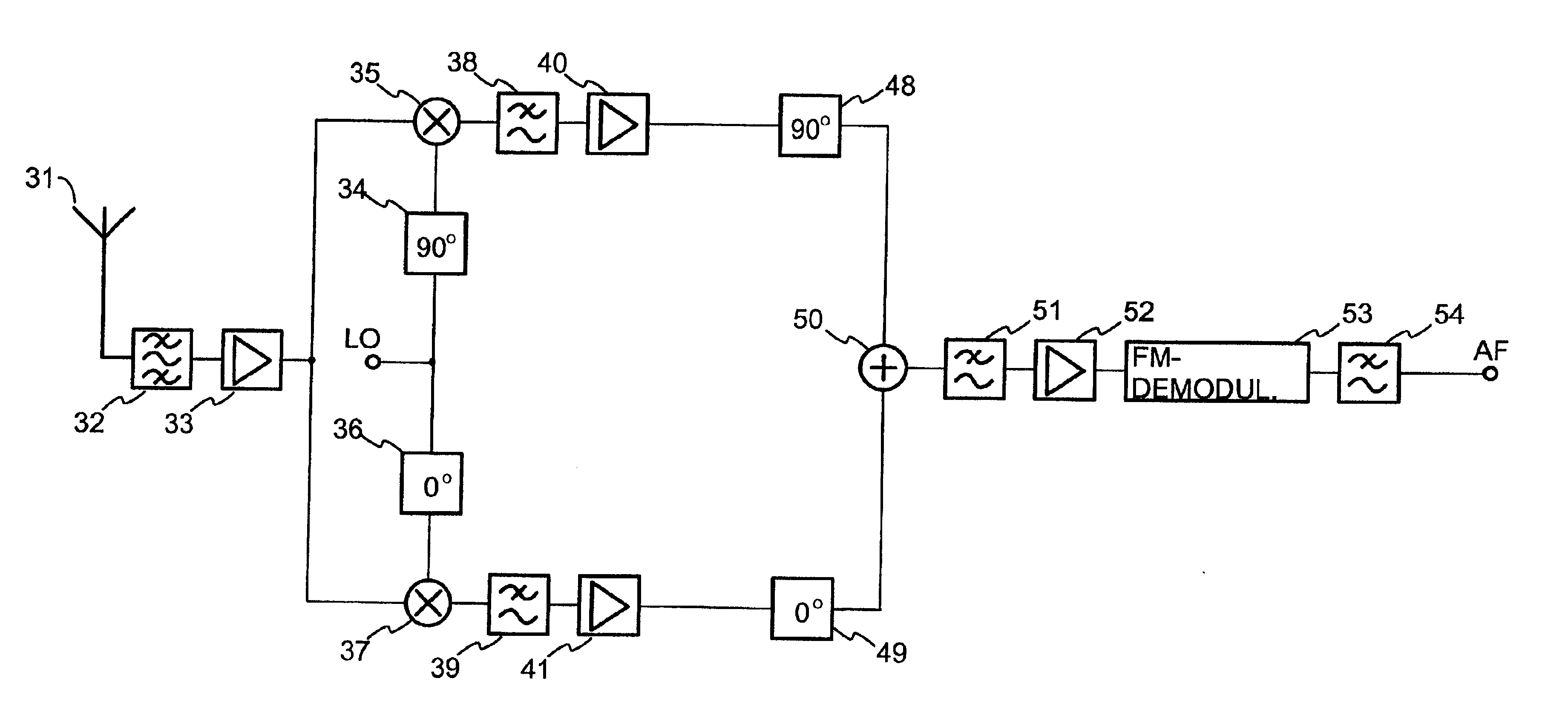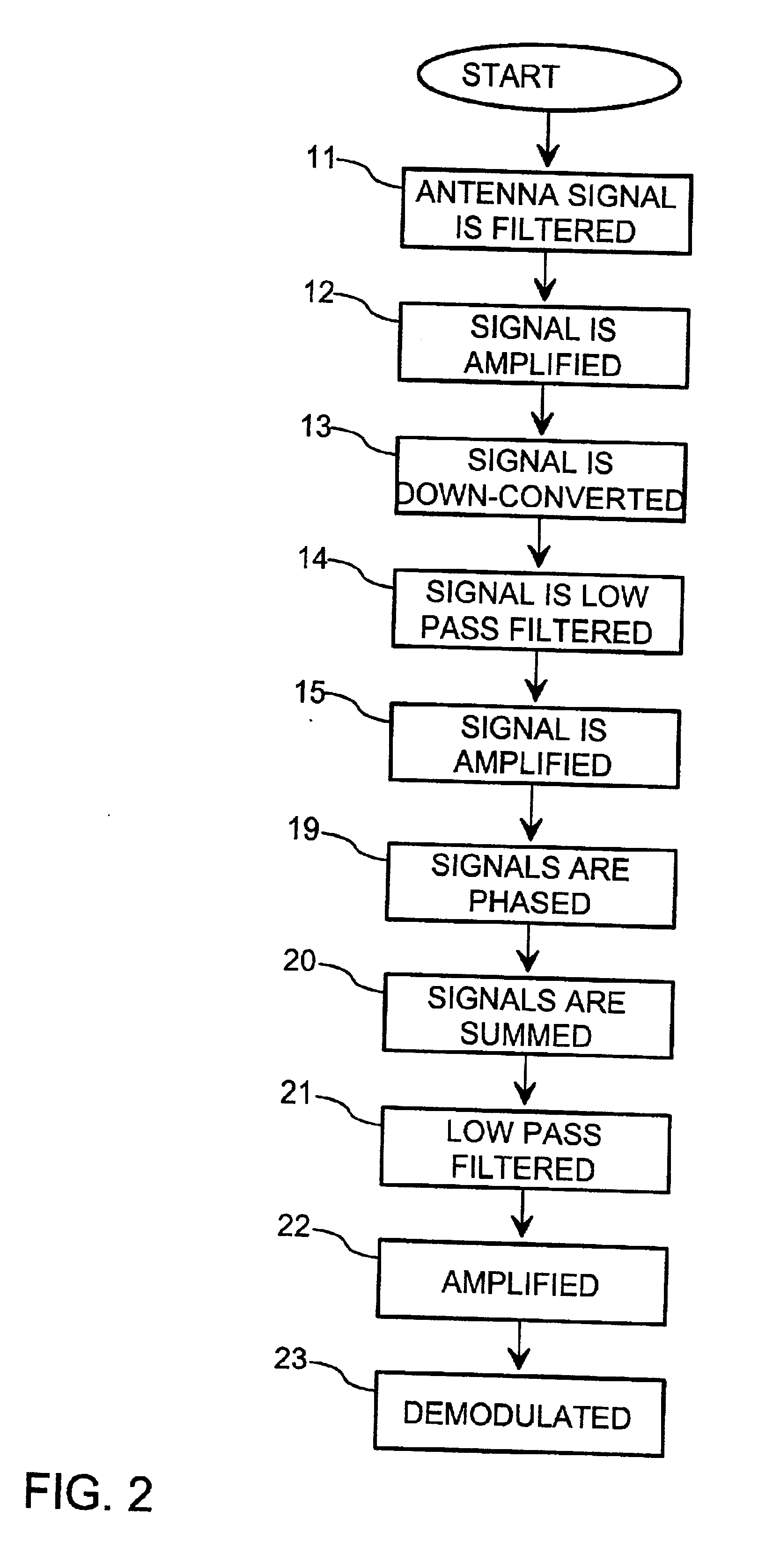Method and arrangement for receiving a frequency modulated signal
a frequency modulated signal and receiver technology, applied in the field of frequency modulated signal receiving methods and arrangement, can solve the problems of heterodyne receivers that require more complex receivers, high manufacturing costs, and high power consumption, and achieve the reduction of the effect of reducing the cost of filters, synthesizers and semiconductors, and reducing the number of other discrete components
- Summary
- Abstract
- Description
- Claims
- Application Information
AI Technical Summary
Benefits of technology
Problems solved by technology
Method used
Image
Examples
Embodiment Construction
[0027]FIG. 1 was discussed above in connection with the description of the prior art.
[0028]FIG. 2 shows a flow chart of a method according to the invention for receiving a frequency modulated signal. The signal received by an antenna is filtered 11 with a band pass filter and amplified 12. The amplified signal is down-converted 13 in two branches with 0° and 90° phase-shifted local oscillator signals respectively. The signals of both branches are low pass filtered 14 and amplified 15.
[0029]The frequency modulated signal is processed in accordance with the invention so that the signals are phased 19 in both branches by phase-shifting the signals 0° and 90° respectively. The phase-shifted signals are added 20 into one signal, which is low pass filtered 21, amplified 22 and demodulated 23. The result is a detected low-frequency signal.
[0030]FIG. 3 shows a block diagram of the parts of a receiver arrangement according to the invention, which are essential for the invention. The signal r...
PUM
 Login to View More
Login to View More Abstract
Description
Claims
Application Information
 Login to View More
Login to View More - R&D
- Intellectual Property
- Life Sciences
- Materials
- Tech Scout
- Unparalleled Data Quality
- Higher Quality Content
- 60% Fewer Hallucinations
Browse by: Latest US Patents, China's latest patents, Technical Efficacy Thesaurus, Application Domain, Technology Topic, Popular Technical Reports.
© 2025 PatSnap. All rights reserved.Legal|Privacy policy|Modern Slavery Act Transparency Statement|Sitemap|About US| Contact US: help@patsnap.com



